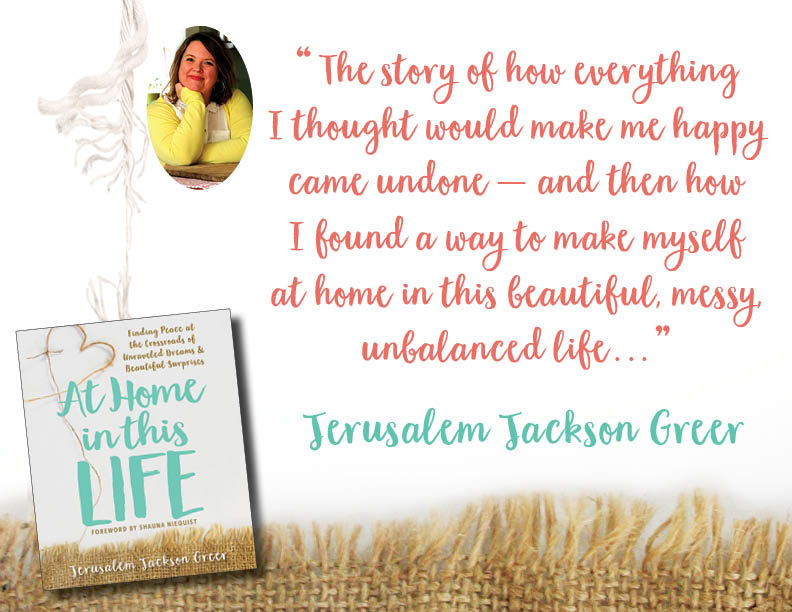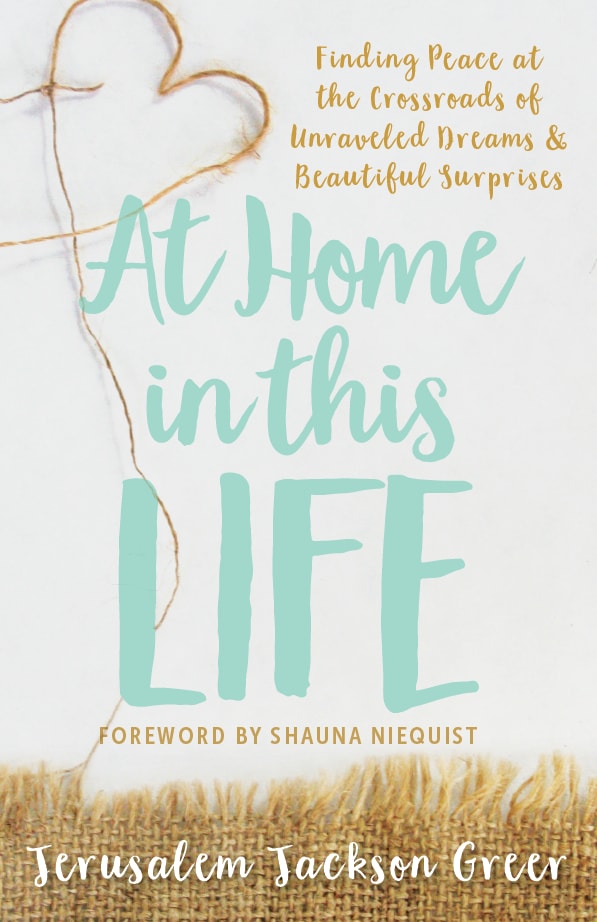 This month something amazing is happening.
This month something amazing is happening.
My second book is being published and brought into the world.
Which is pretty amazing. Maybe even more amazing than when my first book was published.
You see, At Home in this Life; Finding Peace at the Crossroads of Unraveled Dreams and Beautiful Surprises, is not the book I set out to write 4 years ago.
The book I imagined and pitched to my publisher back then, was a little more fluffy, a little less messy. That book was a cheerful little ditty about how to pair monastic practices with domestic chores in cute Pinterest-ways.
But then life happened. Things came apart, plans fell through, dreams unraveled.
And instead of just being cute inspiration for adorable crafts and yummy recipes, the ancient monastic spiritual teachings of steadfastness, transformation, listening, and Sabbath became my life rafts.
They, along with the verses of Jeremiah 29:1-14, became the scaffolding on which I was able to rebuild a life of hope and promise. A life rooted in the goodness of God, the grace of Christ, and the passion of the Holy Spirit.
And the beautiful thing about these practices is that they are not only life rafts. They are also anchors and row boats.
In addition to their life-raft skills, they also hold me fast to one place when what I need most is to stay and learn the lessons that life has for me when it would be so much easier to run away, and they keep me moving and growing in the midst of the most mundane ordinary parts of life when I would much rather be lazy and stagnate.
Using these tools, I have learned how to be present to life I have, growing in gratefulness and faithfulness (imperfectly!) in the process. But as the little poster from my childhood said, “be patient, God isn’t finished with me yet.”
Which is why I have to keep practicing.
In order to really live into the wholeness that God has for us, we – me, you, everyone – has to keep showing up – to the table, to each other, to our lives. We have to keep practicing spiritual disciplines (after all to be a disciple is to be someone who is teachable, not someone who has all the answers,) day in and day out.
Which is where A Rule of Life comes in.
This idea – that there are certain spiritual practices that are able to both anchor, rescue and propel us forward – essentially helping us remain present to our life no matter the circumstances, helping shape and form us in the image of God – is not a new idea – it is one that comes from the monastic tradition and is called A Rule of Life.
“A Rule of Life is an intentional pattern of spiritual disciplines that provides structure and direction for growth in holiness. A Rule establishes a rhythm for life in which is helpful for being formed by the Spirit, a rhythm that reflects a love for God and respect for how God has made us.”
– C.S. Lewis Institute
The cool thing is that A Rule of Life can be established for a community (a monastery, a family, a church) and for an individual. It can be adjusted and modified over the course of a lifetime, it can grow and change as we grow and change.
Different people have different ways of creating A Rule of Life and there are many books and theories on the subject, but I have found what works for me, and what I think what might work for a lot of us, is a pattern based largely on the experiences I write about in At Home in this Life. It is a simple four-part rhythm inspired by St. Benedict’s teachings and Jeremiah 29:1-14.
A pattern that can help us remain present to the life we have, watering the grass beneath our feet, growing deep roots right where we have been planted. A pattern that can help is NOTICE the goodness of God in our everyday lives.
Over the next month, as part of the At Home in this Life book launch celebration, I thought I would unpack this process and idea a little bit here on the blog. Over the next few weeks I am going to look at what each of the four overarching themes (or “vows” as they are called in the Benedictine tradition) that I think help frame an easy-to-use, but completely trans-formative Rule of Life. One that helps me dig into the Spiritual Practice of Being Present, and I think might help you too.
Here is a free worksheet I have created that you can use over the course of the next few weeks to begin creating your own Rule, as we go through the process together, looking at the four guiding themes – Steadfastness, Transformation, Listening and Sabbath – and how we can use other spiritual disciplines to really experience and practice each one to the fullest, making ourselves at home in this amazing, beautiful, chaotic, messy, glorious life!
